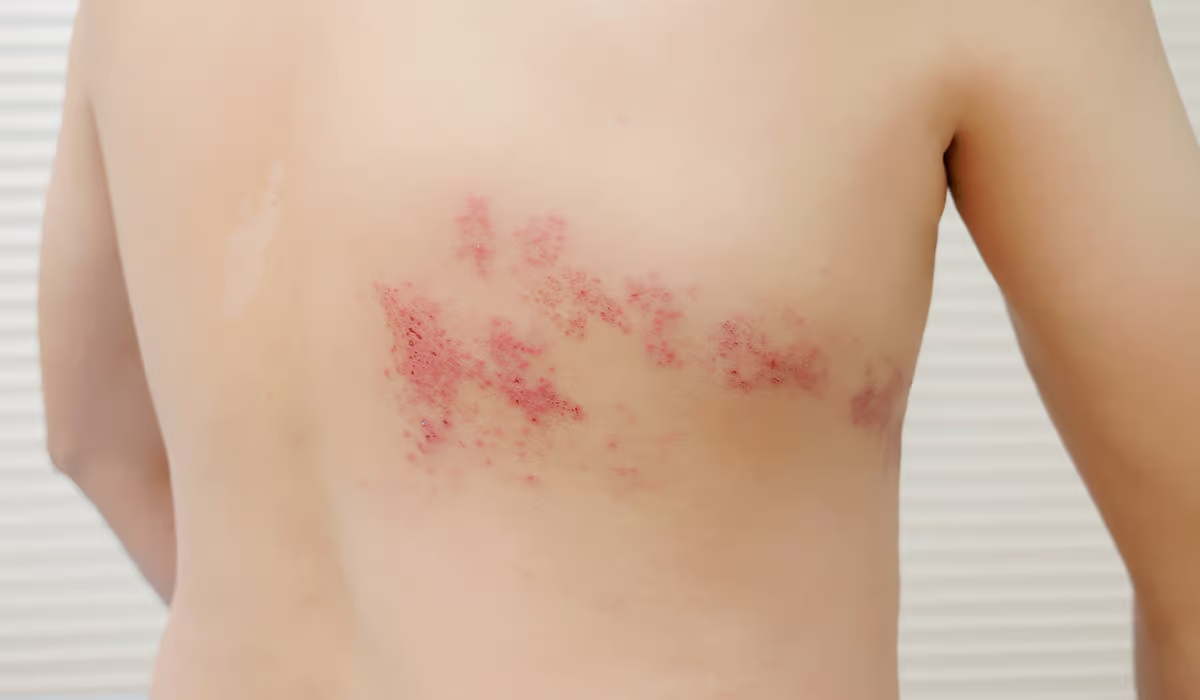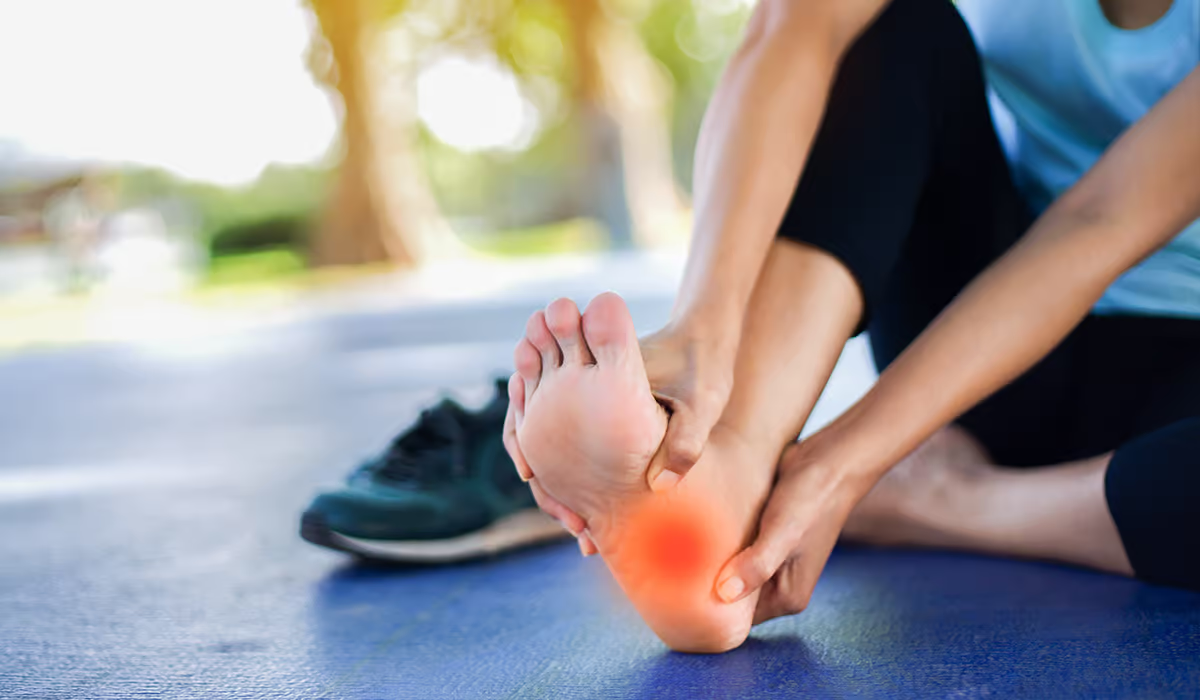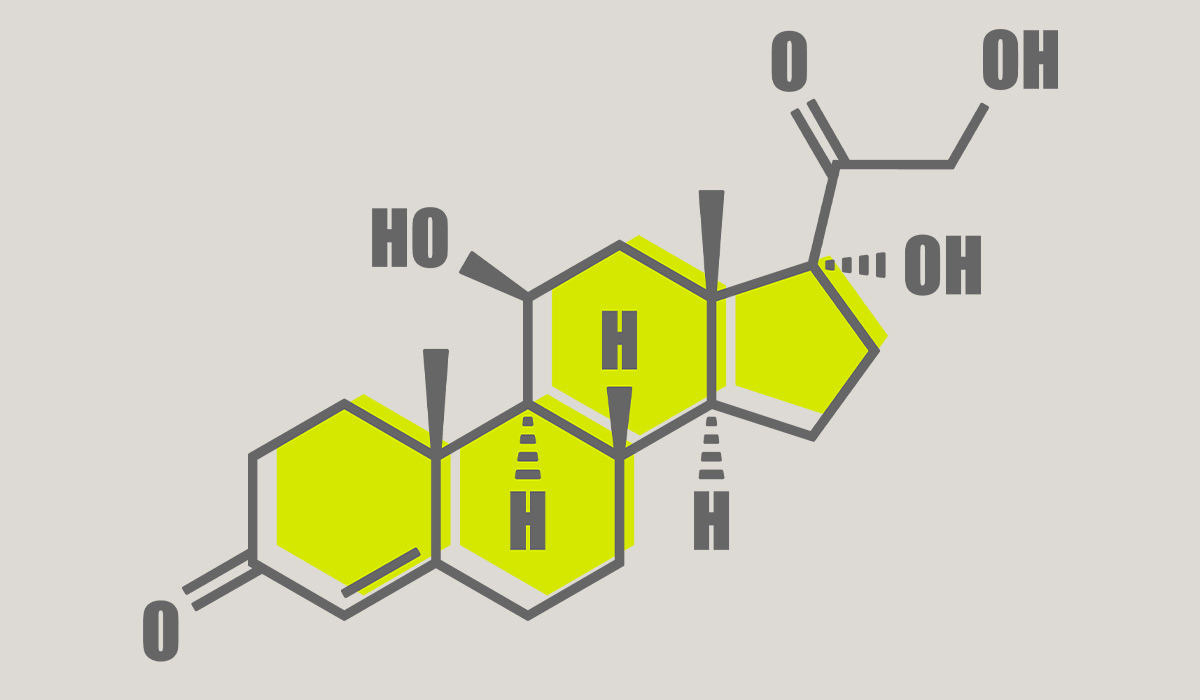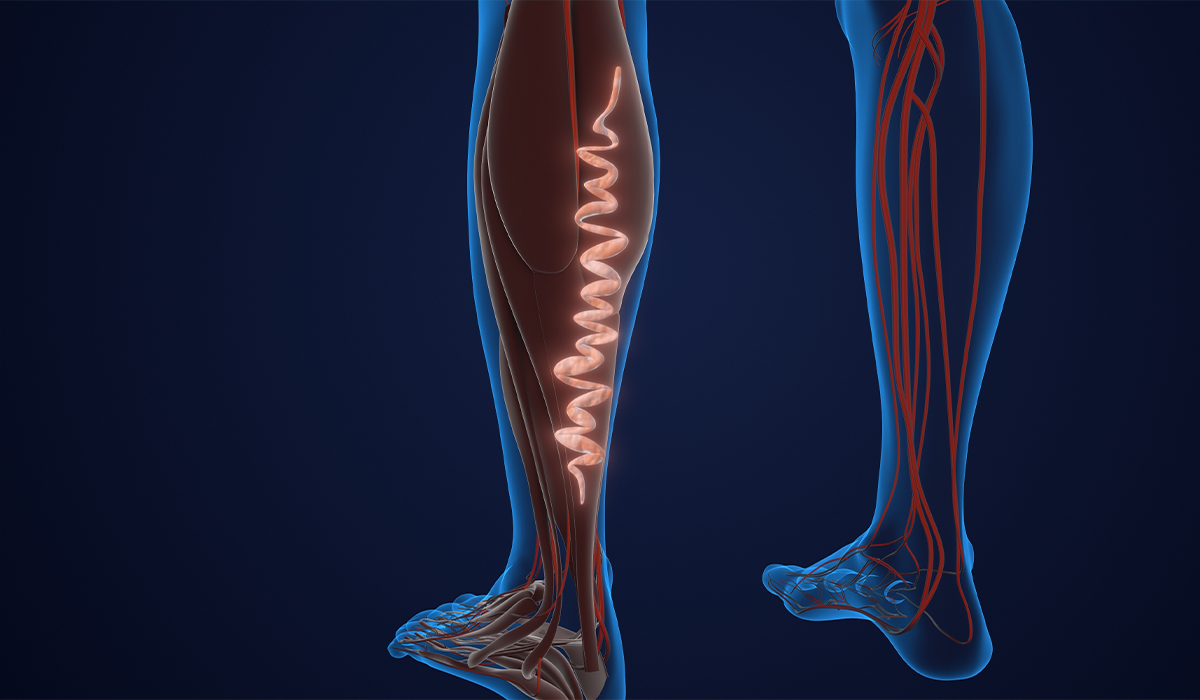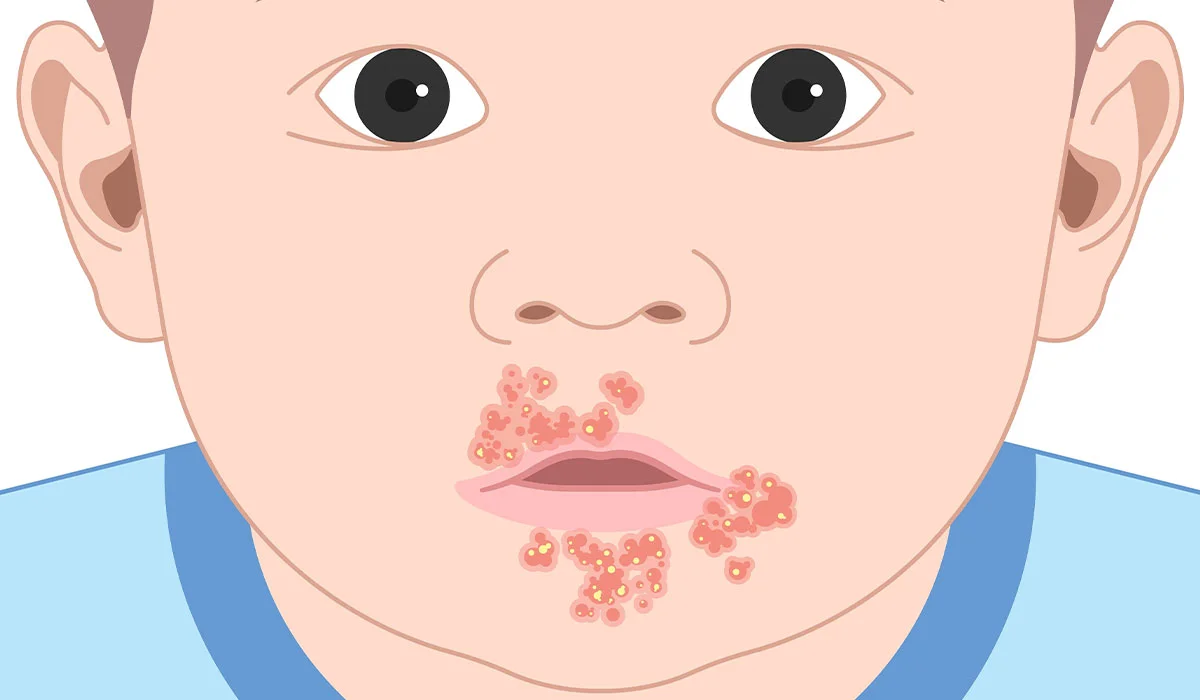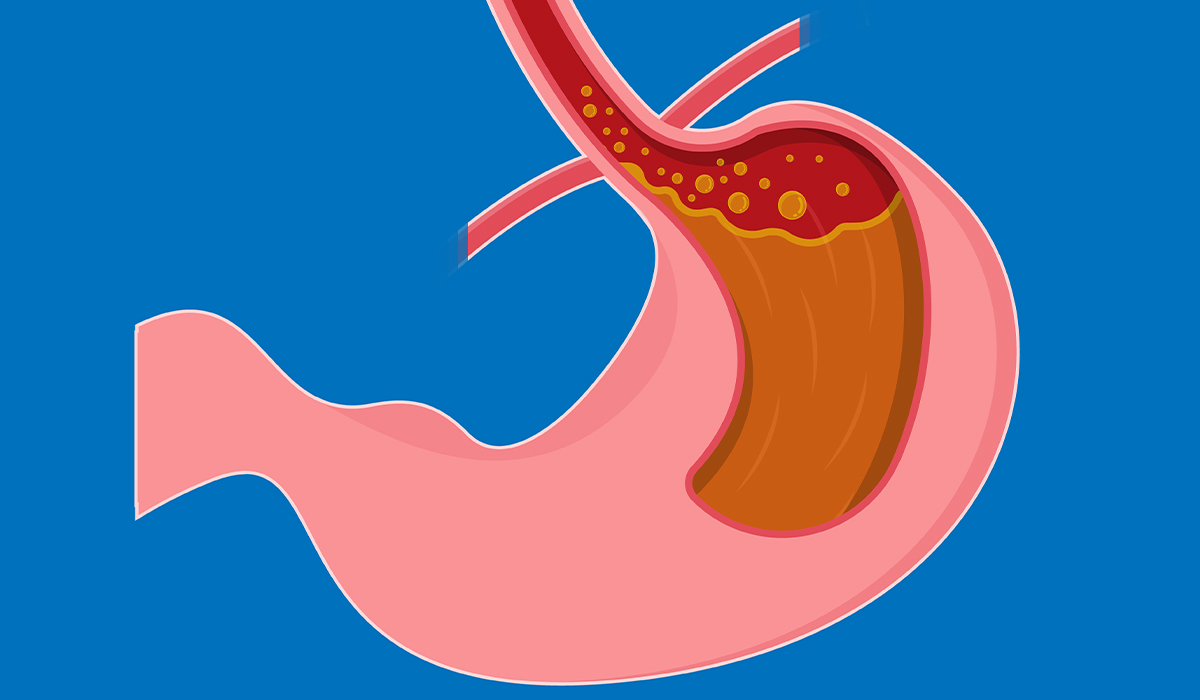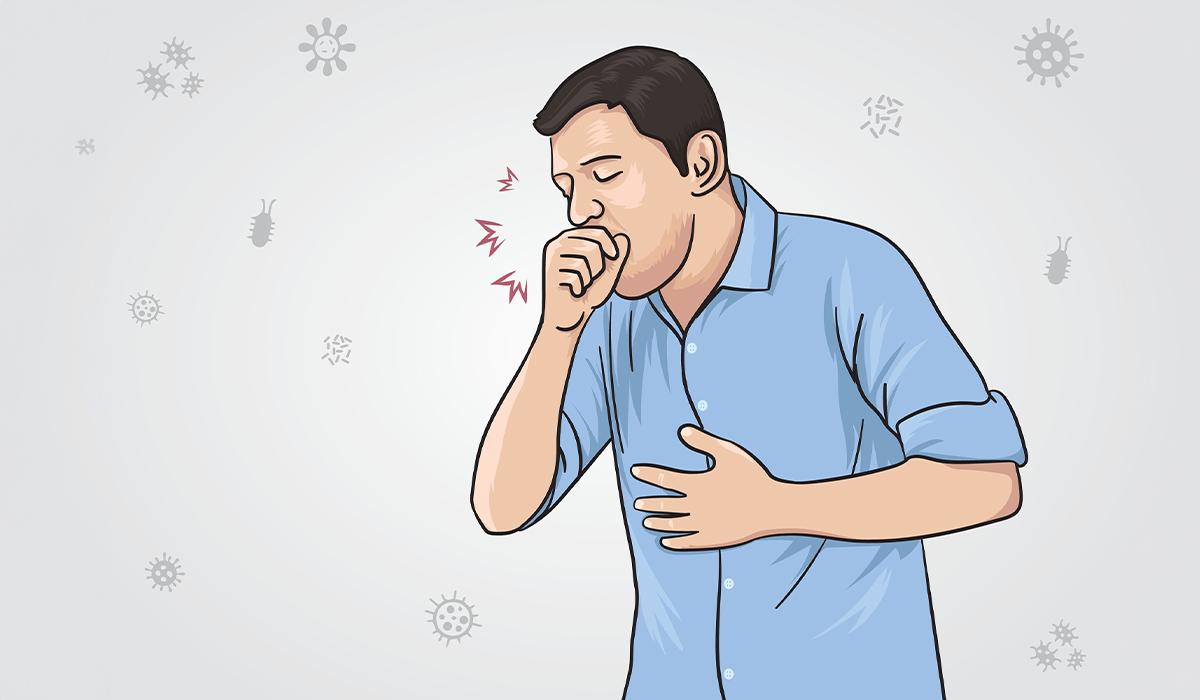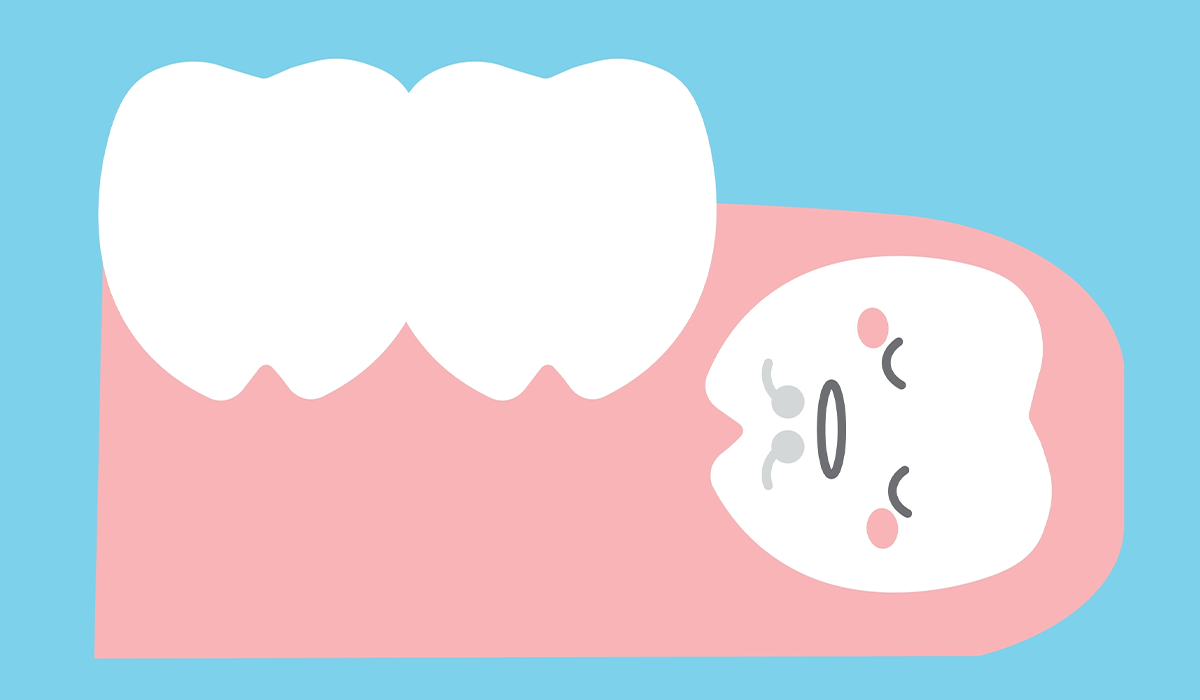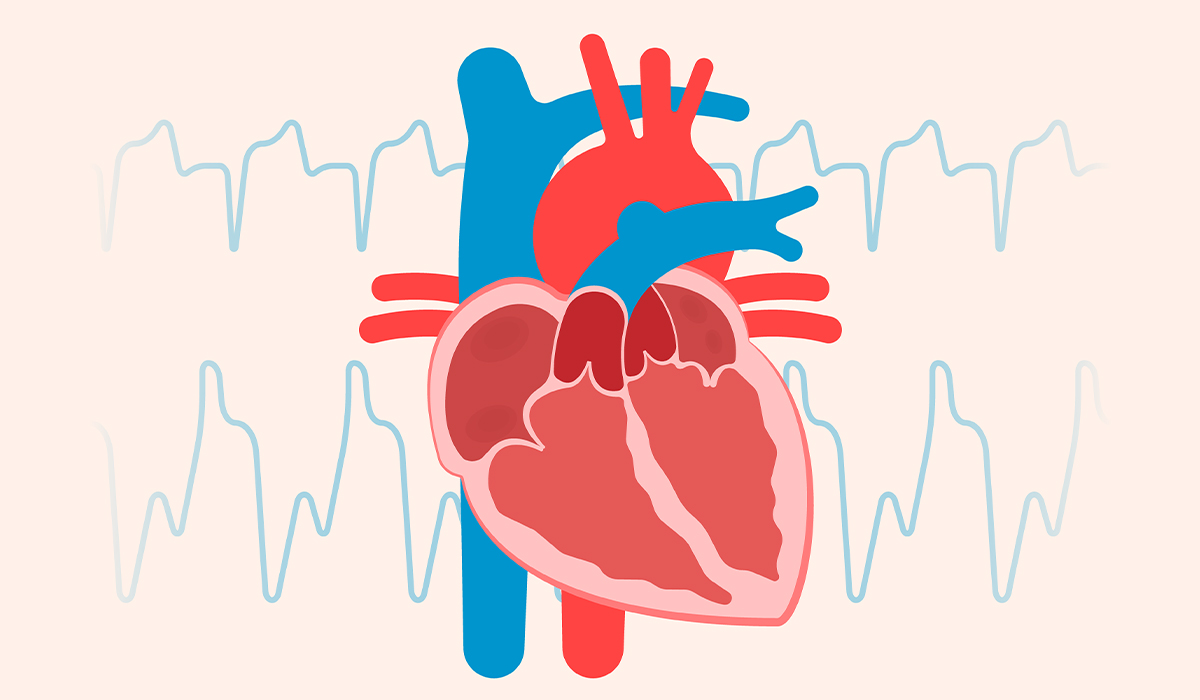The raw material is obtained from fresh plant fragments, which undergo steam distillation and rectification. Eucalyptus oil is used in lozenges, orally administered capsules, painkillers, ointments for relieving cold symptoms, and nasal drops. When combined with other essential oils, eucalyptus oil creates inhalation mixtures with medicinal properties. It consists of cut or whole leaves of the Eucalyptus globulus species, which are dried beforehand. Eucalyptus leaves are extracted using ethanol to obtain a tincture, and in herbal medicine, they are used to make oral infusions.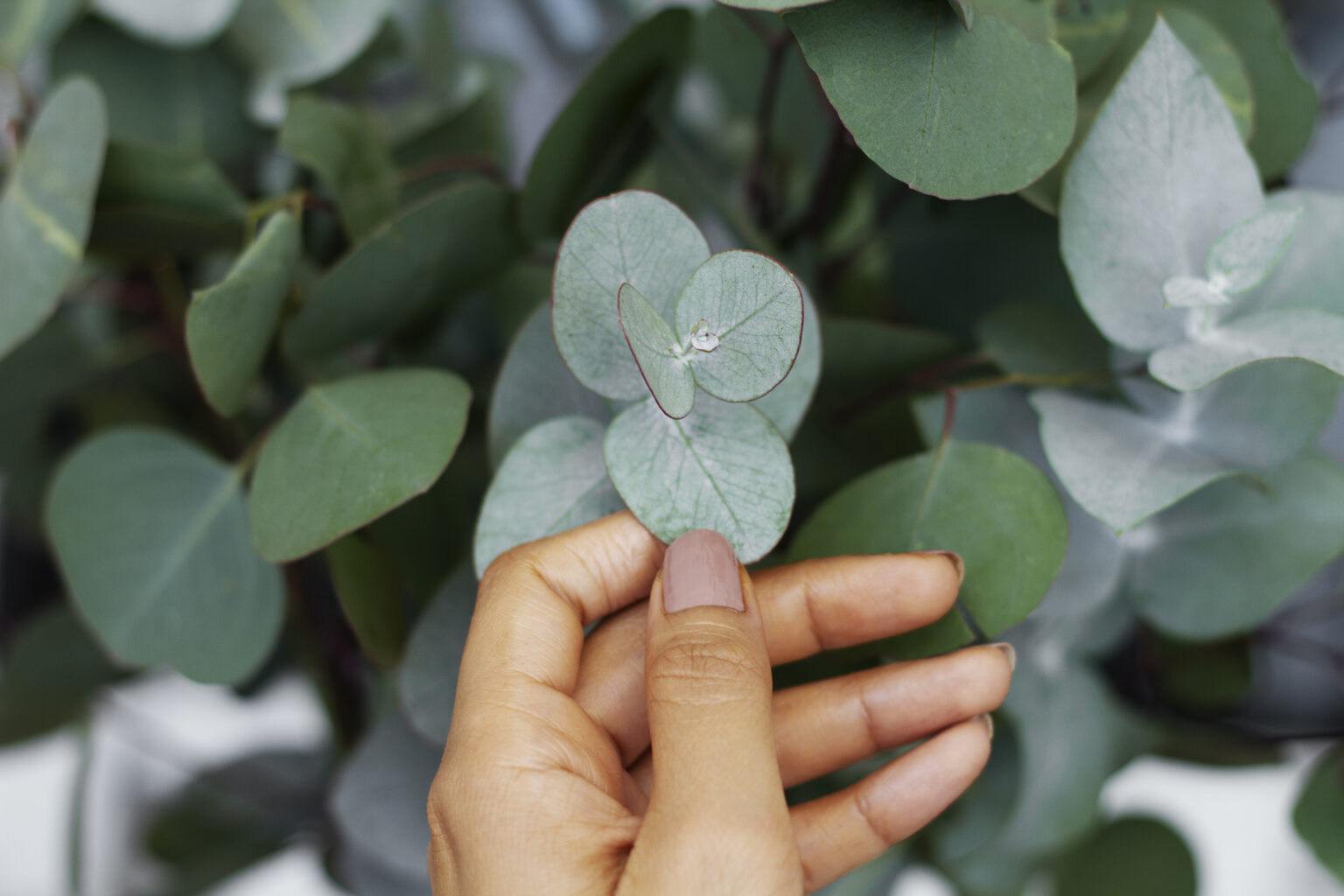
Occurrence
Eucalyptus is the name of a tree or shrub belonging to the Myrtaceae family. Eucalyptus is used to describe over 700 different species of plants. However, three are mainly used in medicine: Eucalyptus globulus (Eucalyptus globulus, also known as Eucalyptus polybractea), and Eucalyptus smithii. The original location of eucalyptus was the island of Tasmania and the southern and eastern areas of Australia.
Eucalyptus requires a sunny location for growth, although some species can grow in semi-shady conditions. They prefer dry or slightly moist soils. Currently, eucalyptus is cultivated in many areas of the intertropical zone and countries with a warm temperate climate.
Appearance
Eucalyptus globulus is a spreading tree that grows up to 60 m high. In the lower part, the straight trunk of the plant is covered with gray, rough bark. Above, the bark is creamy with a smooth structure. Like other eucalyptuses, Eucalyptus globulus is an evergreen species.
Leaves
Its leaves are leathery and dark green with a distinct bluish hue. The underside of the leaves is lighter, referred to as silvery white. The leaves are large (average length is 15-40 cm, width—5 cm) and arranged oppositely on the stems. They are sessile, and their base embraces the stem. The leaf blade has a sword-shaped or elliptical-ovate shape. It hangs obliquely or vertically from the branches. On its surface, there are brownish lenticels and colorless oil glands.
Flowers
In natural stands, Eucalyptus globulus blooms in spring and early summer. The flowers of the eucalyptus globulus are single, pedunculated (short and strong peduncles, up to 4 mm), or without peduncles. They are hermaphroditic, with white or cream stamens and a single pistil. The flower buds are pendulous and small with four distinct ribs.
The flower buds are covered with a cup-shaped membrane, from which the plant’s name probably derives. The cap is flattened and provided with a central nodule. Insects, birds, and small mammals pollinate the flowers.
Fruit
The fruit of Eucalyptus globulus is a woody, cup-shaped capsule containing many small seeds. The wart-like seed capsule has distinct ribs and bursts at its peak.
Use
The pharmacy offers a wide range of products utilizing the healing properties of eucalyptus, including medicines, dietary supplements, and cosmetics. Eucalyptus oil has diverse applications, such as relieving colds and rheumatic pains and stimulating respiratory secretions. It is also used in aromatherapy, massage oils, skincare, and oral preparations. Eucalyptus oil is added to insect repellents, toothpaste, mouthwashes, and foot creams due to its antibacterial and antiviral effects. Furthermore, it is used in specialized products for skin care and to prevent decubitus ulcers.
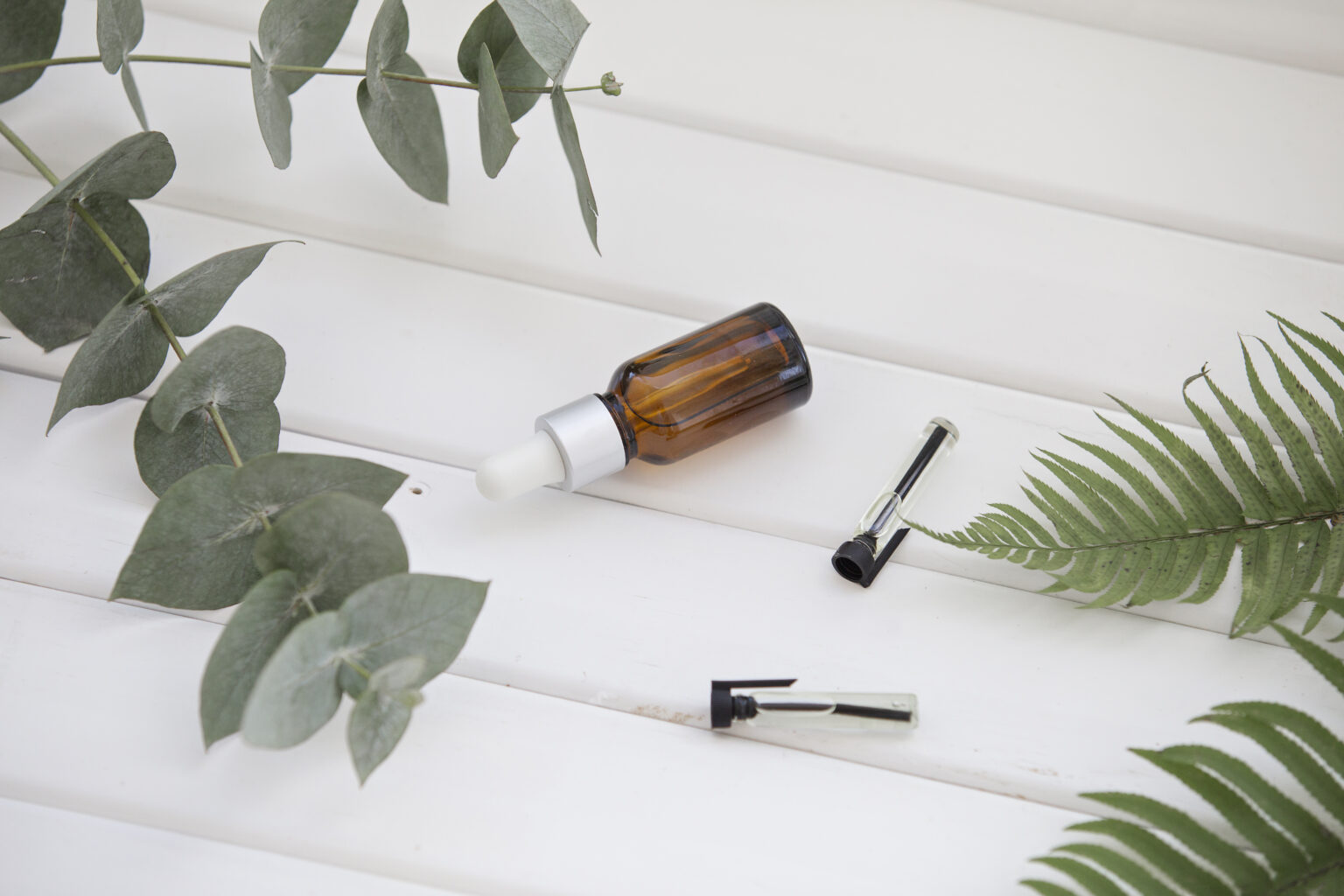
Properties And Composition
Dried eucalyptus leaves contain an average of 1-3.5% essential oil. Its main component is 1,8-cineole also called eucalyptol. Other components of Eucalypti aetheroleum are monoterpenes, including cymene, α-pinene, β-pinene and limonene, geraniol, and camphene. Cumin aldehyde, globulol, and pinocarveol have been isolated in the oil. In addition to the essential oil, the raw material contains biologically active compounds such as monoterpenes, sesquiterpenes, gallotannins, procyanidins, ursolic acid derivatives, flavonoids (including rutin, quercitrin, and quercetin), phloroglucinol derivatives (euglobal, eucalyptone, macrocarpal), tannins and polysaccharides.
Both water and alcohol extracts from dried eucalyptus leaves demonstrate strong antimicrobial potential.
In vitro tests were used to justify the beneficial effects of eucalyptus leaves on respiratory tract inflammation, asthma, and cough. Eucalyptol administered by inhalation improved the lung compliance coefficient and did not cause damage to the delicate structure of the respiratory tract epithelium. 1,8-cineole contained in eucalyptus inhibits the pathways of arachidonic acid metabolism and reduces the production of proinflammatory cytokines, including leukotriene LTB4, prostaglandin PGE2, tumor necrosis factor TNF-α, interleukin-1β, and thromboxane-B2.
Aqueous extracts from eucalyptus leaves demonstrate antioxidant activity. The phenolic compounds contained in the tested raw material are mainly responsible for the removal of free radicals. In one of the experiments, the antiradical properties of compounds – chlorogenic acid, ellagic acid, rutin, and quercitrin – were proven from an aqueous extract of eucalyptus leaves.
The active substances in eucalyptus leaves determine the raw material’s hypoglycemic properties. Several in vitro and in vivo studies have been conducted in this area. In an experiment using mice with induced diabetes, the addition of dried eucalyptus leaves to their diet and eucalyptus leaf extract to their drinking water resulted in a decrease in blood glucose concentration and inhibition of body weight loss. The eucalyptus diet also showed positive effects on the regeneration of cells of the islets of Langerhans.
Additionally, aqueous extracts from Eucalyptus globulus leaves were found to inhibit the absorption of simple sugars from the intestines in rats, which may be relevant for combating obesity in the future.
Dosage
Oral preparations containing eucalyptus should not be used if there is inflammation or ulceration in the gastrointestinal tract, gallbladder disease, or liver dysfunction.
Avoid applying eucalyptus oil, ointments, or creams with eucalyptus oil to the face, especially under the nose, particularly for infants and small children. Doing so can cause reflex contraction of the glottis and apnea. Contact with the eyes can lead to irritation of the conjunctiva. People with epilepsy should not use eucalyptus oil.
The HMPC (Herbal Medicinal Products Committee) advises against using eucalyptus leaf preparations in children under 30 months. There is no safety data available for using eucalyptus during pregnancy and breastfeeding. Therefore, eucalyptus oil and preparations containing eucalyptus leaf should be avoided during these times.
Therapeutic baths with eucalyptus oil should not be used by individuals with extensive skin damage, acute skin dermatoses, or severe cardiovascular disorders.
Methods
The use of eucalyptus oil includes:
- Inhalation – a few drops of the oil should be used in a vaporizer or added to hot water and the rising vapors should be inhaled (approximately 12 drops per 150 ml of boiling water).
- Topically on the skin – in the form of ointments containing an average of 5-20% eucalyptus oil or by directly applying the oil to the skin. The oil can be diluted in a base oil and used for massage (an average of 30 ml of oil per 500 ml of vegetable oil).
- Orally – 0.3 ml to 0.6 ml of essential oil in divided doses daily per day (0.05-0.2 ml per dose). In the form of lozenges – 0.2-15.0 mg of oil per lozenge. The preparation should be slowly dissolved in the oral cavity. The dosage can be repeated every 0.5-1 hour.
Do not start any treatment without consultation with the specialist.
Leaves
Use of eucalyptus leaves include:
- A daily dose of raw material at the level of 4-6 g of dried and crushed leaves
- In the case of respiratory diseases, an infusion of approx. 2 g of leaves is traditionally prepared by pouring 150 ml of boiling water over them. The brewing time is 10-15 minutes. You can drink up to 3 glasses of infusion daily
- Eucalyptus leaf tincture (alc. 45%) – 5-20 ml daily
Oil
Storebought eucalyptus oil is both a cosmetic and a medicine with astringent and anti-inflammatory effects. You can add it to a bath, gargle with it, or inhale it.
You can make it yourself. To prepare the oil, you will need eucalyptus leaves, cotton gauze, almond oil, and vitamin E. Eucalyptus leaves can be purchased from an online store, a flower shop, or picked from a self-growing plant.
Eucalyptus leaves, when crushed, produce juice, which should be allowed to drain into a pot. Then, add almond oil (for 9-10 g of leaves – one glass of almond oil) and bring to a boil – cook for 5 hours on the lowest possible heat. When the mixture is ready, put the pot in a dark place where there is no moisture for two weeks, and after that, filter the liquid through gauze and add vitamin E. However, it is often better to buy ready and safe preparation.
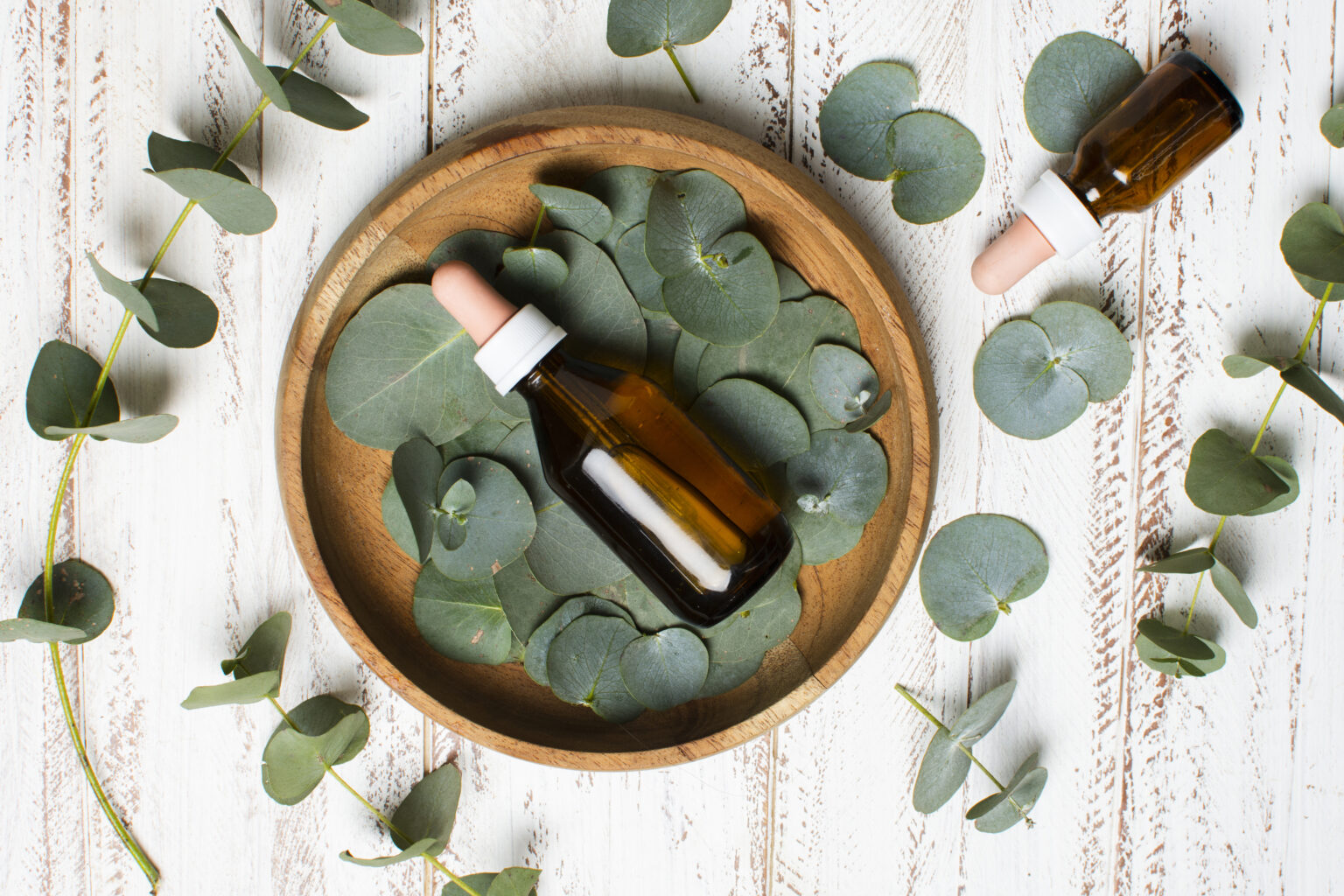
Infusion
The ingredients needed to prepare the drink are eucalyptus leaves (100 g) and a liter of water. Add the leaves to the heated water and wait a few minutes for the whole thing to brew. Prepare the infusion from the leaves, preferably dry. It is worth remembering not to drink more than 4 cups of the infusion per day.
Throat Rinse
To prepare a eucalyptus throat rinse, you will need two tablespoons of dried eucalyptus leaves and 1 cup of water. Add the leaves to the water and boil the whole thing. Then, remove the rinse from the heat and wait for it to cool. Gargle with a small amount of the liquid for about 20 minutes. It is best to use it in the morning and evening to not strain your throat – it is worth using it right after waking up and in the evening before going to sleep.
Bath
Using eucalyptus in a bath will make the body absorb the valuable ingredients contained in the plant faster. To prepare a bath, you only need a liter of water and 100 g of dried leaves or a few drops of homemade or store-bought eucalyptus oil. Pour the mixture into a bathtub of water, immerse yourself in it for 30 minutes, and wash your body under running water afterward.
Growing In A Pot
Eucalyptuses can also be grown at home as ornamental plants. They grow best at room temperature in pots. Eucalyptus trees like slightly acidic soil, although they can also grow in regular flower soil and it does best in a sunny or semi-shaded spot.
They should be watered regularly, especially in spring and summer. However, eucalyptus that is watered too much can rot. During the heating season, it is better not to keep this plant near radiators, as it can wither.
Eucalyptus should be trimmed regularly, preferably in spring, so it does not grow too large. They should not grow higher than 1.5 m.
Sources
- Eucalyptus. NIH.
https://www.cancer.gov/publications/dictionaries/cancer-terms/def/eucalyptus - Biological, medicinal and toxicological significance of Eucalyptus leaf essential oil: a review. NIH.
https://pubmed.ncbi.nlm.nih.gov/28758221/ - Chemical Composition and Biological Activities of Eucalyptus globulus Essential Oil. NIH.
https://pmc.ncbi.nlm.nih.gov/articles/PMC10004840/ - Anti-Inflammatory and Antimicrobial Effects of Eucalyptus spp. Essential Oils: A Potential Valuable Use for an Industry Byproduct. NIH.
https://pmc.ncbi.nlm.nih.gov/articles/PMC10322318/ - Essential Oil Composition, Antioxidant Activity and Leaf Micromorphology of Five Tunisian Eucalyptus Species. NIH.
https://pmc.ncbi.nlm.nih.gov/articles/PMC10135225/ - Effects of Different Doses of Eucalyptus Oil From Eucalyptus globulus Labill on Respiratory Tract Immunity and Immune Function in Healthy Rats. NIH.
https://pmc.ncbi.nlm.nih.gov/articles/PMC7472567/ - Chemo-profiling of eucalyptus and study of its hypoglycemic potential. NIH.
https://pmc.ncbi.nlm.nih.gov/articles/PMC3797882/ - Assessment report on Eucalytus globulus Labill., Eucalyptus polybractea R.T. Baker and/or Eucalyptus smithii R.T. Baker, aetheroleum. EMA.
https://www.ema.europa.eu/en/documents/herbal-report/final-assessment-report-eucalytus-globulus-labill-eucalyptus-polybractea-rt-baker-andor-eucalyptus-smithii-rt-baker-aetheroleum_en.pdf - Eucalyptus oleosa Essential Oils: Chemical Composition and Antimicrobial and Antioxidant Activities of the Oils from Different Plant Parts (Stems, Leaves, Flowers and Fruits). NIH.
https://pmc.ncbi.nlm.nih.gov/articles/PMC6259913/

